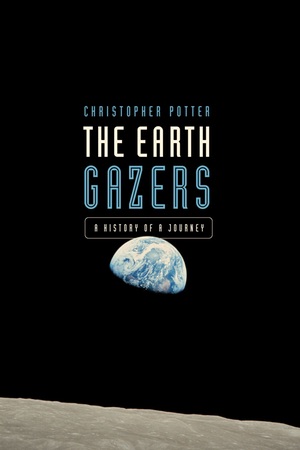Review: The Earth Gazersby Jeff Foust
|
| He examines the history of spaceflight through another lens, both figurative and literal: efforts to take images of the Earth from space and see the world as it really is, a sphere floating in the darkness. |
The ability to see the Earth from space is something we take for granted today. Images from weather satellites are a part of our everyday lives, while a growing number of commercial ventures operate satellites to image the planet both at high resolution and with frequent updates. But not that long ago seeing the Earth from space, in particular deep space, was revolutionary, something examined by Christopher Potter in The Earth Gazers. (See also “On seeing the Earth for the first time”, The Space Review, this issue.)
At one level, Potter’s book is a recounting of the pre-history of the Space Age, in particular the work of Robert Goddard and Wernher von Braun, and the early Space Race between the US and USSR. However, he examines the history through another lens, both figurative and literal: efforts to take images of the Earth from space and see the world as it really is, a sphere floating in the darkness.
Such imagery was not a priority for NASA in its race to the Moon in the 1960s. One of the unsung heroes from that era, highlighted in the book, is Richard Underwood, an aerial photography expert brought in by von Braun to test putting cameras on Redstone rockets and, then later working with NASA. Underwood faced opposition within NASA, particularly by engineers who thought photography should be limited to gathering technical information by the spacecraft, with any images of the Earth a waste of time and resources.
However, Underwood built up support over time with NASA leadership, who were impressed with the imagery, particularly during the Gemini missions. On later Gemini missions, he provided astronauts with lists of potential targets they could photograph when they were supposed to be sleeping. “The astronauts were more than happy to play along; it gave them a rare sense of independence and the opportunity to be more than just a man in the can; to be artists,” Potter wrote.
Despite those photos, and some other NASA and military missions that offered images of the Earth from higher altitudes (including an “Earthrise” image taken by the Lunar Orbiter 1 spacecraft), those images didn’t really resonate with the public until the two famous images from the Apollo program: Apollo 8’s color image of Earthrise from lunar orbit, and Apollo 17’s “Blue Marble” image taken en route to the Moon. Prior to the launch of Apollo 17, Underwood told Harrison Schmitt that, given that mission’s trajectory, taking an image about five hours into the mission would likely result in something that “would become a classic.” Schmitt took that image, and Underwood turned out to be right.
The Earthrise and Blue Marble images turned out to be among the most famous images not just from the Space Age, but of modern history—or maybe all of history. They showed the Earth’s true nature, and helped catalyze the environmental movement. But different people see different things in those images. Apollo 11’s Mike Collins recalled seeing the Earth and realizing “what a tiny, fragile thing Earth is.” Schmitt, a geologist, took the opposite view: “I think the pictures make it look a lot more fragile than it is,” he said. “The Earth is very resilient… I know what blows it’s taken.”
| Mike Collins recalled seeing the Earth and realizing “what a tiny, fragile thing Earth is.” Schmitt, a geologist, took the opposite view: “I think the pictures make it look a lot more fragile than it is.” |
The Earth Gazers offers interesting insights into our views of the Earth from space, but it takes some work to get to them. A lot of the book revisits the history of the Space Age through Apollo that is unlikely to offer new insights for those already familiar with its history (Potter relies primarily on secondary sources for his work.) There’s also a lot of material that seems tangential as best, like extended sections on the life of Charles Lindbergh or Madalyn Murray O’Hair, the atheist who sued NASA for broadcasting the readings from Genesis by the astronauts on Apollo 8.
The book’s conclusion is that it took the high-resolution color images by Apollo 8 and 17 to really provide the prospective of seeing the Earth from space, something that earlier images, from high-altitude satellites or Lunar Orbiter, were unable to provide. Today we are awash in such images: NASA’s Epic Polychromatic Imaging Camera (EPIC) on the Deep Space Climate Observatory (DSCOVR) spacecraft offers full-disk images of the Earth from its perch at the Earth-Sun L1 point about 1.5 kilometers away, several times the distance of the Moon. Those images are available online for anyone to peruse.
DSCOVR had its roots in a mission called Triana initiated two decades ago by then Vice President Al Gore, believing that such images of the Earth would have the same impact on society as the Blue Marble image did. Congress didn't agree, and shelved it for years until it was revived as DSCOVR, primarily serving as a space weather mission. EPIC was retained, though, and provides images—except that NASA proposed shutting down the camera in its 2018 and 2019 budget proposals despite its miniscule budget. Seeing the Earth from space may have once inspired a sense of wonder, but half a century from Apollo 8, that may have been lost.
